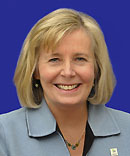Equity: 'the superior growth model'
October 2013
A recent Council analysis of census data shows the Twin Cities region is recovering from the recession of the last decade. At least middle- and high-income households are.

But what about low-income households? What about people of color?
The same analysis shows poverty in our region continues to increase. And if you’re a person of color, you’re more likely to be in poverty than your white neighbors. The recent recession only exacerbated this problem.
These dispiriting numbers must lead us to the inevitable questions: How can we plan for a prosperous future in the Twin Cities region that addresses these racial disparities? And how do we turn this conversation from one of obstacles to one of endless opportunities?
PolicyLink, based in Oakland, California, has called for communities to adopt a new growth model that embraces the nation’s changing demographics, calling equity “the superior growth model.” And with people of color comprising 42% of our own region’s population in 2040, the time to adopt that growth model is now.
The Council’s work on the Thrive MSP 2040 plan, and the accompanying Fair Housing and Equity Assessment, attempts to focus attention on this new growth model. The plan is built on core principles that will help our region ensure that all residents have safe, stable communities, and access to good jobs, transportation choices, natural areas and vibrant public spaces.
The Council acknowledges that all residents and communities are full and equal partners in decision-making. Equity means more than just equality – it acknowledges that racial disparities in educational outcomes, health, wealth and income, and employment create additional barriers to success. We can all have the same pair of shoes, but if yours fit and mine are too small, your outcome in a race will likely be better than mine.
And economically, we can’t afford to place our communities at risk by not addressing these inequities. Our region has a high racial employment gap, which is much higher than other top metropolitan areas in the United States.
An Itasca Project socioeconomic disparities task force has convened business and community leaders to discuss ways businesses can address these disparities both within their organizations and regionally. The task force’s research strongly affirms our region’s need – that exists today and will continue to exist in the future – for different skills and flexible training programs so workers can update their skills when necessary. Together, we can alter the pattern of significant employment and income disparities by taking a regional approach.
All of the communities within our region – especially our communities of color – deserve better. We need to acknowledge the opportunities that our growing diversity represents and begin to share the power in decision-making and prosperity more broadly.
Though the Thrive MSP 2040 plan will include key policies and indicators to help us plan more inclusively, the Council still has a limited impact over the conditions that have created the racially concentrated areas of poverty identified by the Fair Housing and Equity Assessment. In the next year, I plan to address with the Council how we could serve a convening role, and bring service providers and other stakeholders together to begin creating an action plan to address poverty in our region so we really can have a strong, stable, sustainable community for everyone in the next 30 years and beyond.
Tags: equity